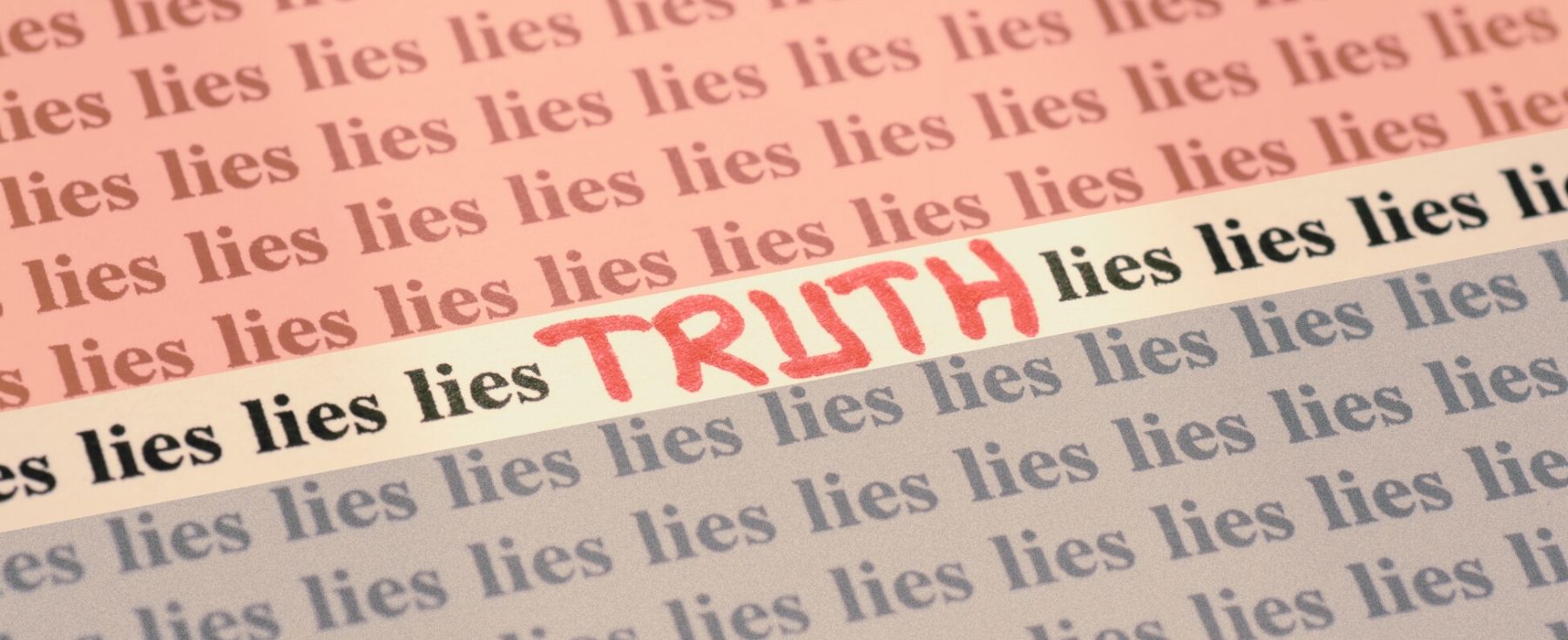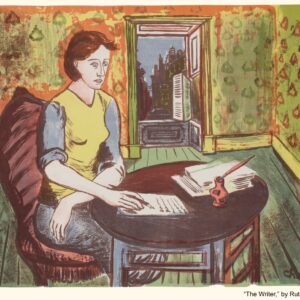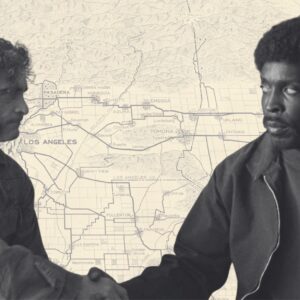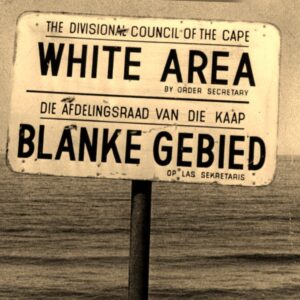
Lies, Damn Lies, and Magazine Pieces: On the Cursed Art of Fact Checking
Isabel Ruehl Reads Austin Kelley’s Debut Novel “The Fact Checker”
I skirted an abandoned development of some kind, half-built, its windows smashed, wild dogs on its concrete foundation barking at me not to come any closer…
This is a sentence from one of the first pieces I ever fact checked. In the passage, the writer walks from the Rome airport to the mouth of the Tiber; I’d just been hired by Harper’s Magazine, and my job was to verify the essay by Monday. It sounded easy enough. I found some derelict buildings on Google Street View—check, check (at Harper’s, we physically tick off each word that’s verified, pen-on-paper, so that our eyes don’t scan over any detail)—but how to confirm that there might be wild dogs in the area…?
I searched the internet with no yield, but I wasn’t bothered. Surely this was plausible. Still, I wanted to be thorough, so I contacted various tourism and wildlife places. “We’re sorry but we cannot answer,” one replied. So on Monday, I told my editor (himself a former checker) that this fact seemed unprovable but fine. How could we know whether the writer had seen wild dogs? I’d learned that they weren’t frequently running about Rome, but so what? To my surprise, he asked whether I’d called the airport, so I did. They were very confused.
Austin Kelley’s debut novel The Fact Checker dramatizes these questions of fact, truth, and provability as the protagonist checks an article about the Union Square Greenmarket. Narrative nonfiction exists in a gray area, somewhere between reporting and poetry, and the checker’s job is to break an essay into its component parts, confirm what’s true, and fix what’s false. This is a tremendous amount of rapid research, and the unnamed Fact Checker, whose work is indeed his identity, is beginning to feel it. He has checked this writer, Mandeville, before, and explains that Mandeville “was not a liar, but he often left out large swaths of truth in order to give his story a more surreal and dramatic quality.”
Already, Truth and Narrative are at odds. “The trick, in checking him,” he continues, “was to know enough of that hidden truth so that you could be sure that nothing and no one was grossly misrepresented.” When Mandeville quotes a vendor named Sylvia hinting at “nefarious business,” the Fact Checker is seized with that familiar feeling of obsession—of not knowing, of needing to know, to access the “hidden truth.” He meets Sylvia at the market and becomes infatuated. She is his oracle, the only one who can see what’s really happening there. But she refuses to explain what the nefarious business is—and then she disappears. What is the secret, and why is she keeping it?
The quest is on, and the more time the Fact Checker spends on the trail, the more frustrated he becomes, finding that writers and editors often think more in terms of theme and metaphor than he can tolerate. One writer named Hazlin files an essay and tells his editor: “It’s all written. Now all it needs is the facts.” The editor laughs; the Fact Checker does not. This sort of writerly fabrication is a central preoccupation of The Lifespan of a Fact, a book-turned-Broadway-play (starring Daniel Radcliffe as the fact checker, Jim Fingal) in which the writer, John D’Agata, proclaims: “I take liberties with things that deepen the central truth of the piece.” Fingal is appalled by falsification; the play becomes a showdown between different notions of truth. “Readers care how events play out on a deeper level… It’s problematic for you to wash your hands of their accuracy,” he protests. D’Agata has made up many details about his characters—where someone is from, how someone died—for reasons like “to underscore the transient nature of the city.”
Harper’s Magazine is directly implicated in the drama: this is where D’Agata submitted his iffy essay about a teen suicide in 2003. Harper’s ended up pulling the piece, largely because of D’Agata’s resistance to fact checking; it was then picked up by The Believer, whose checker, Jim Fingal, embarked on a prolonged battle with the writer. In 2012, Fingal and D’Agata published this (fictionalized) book about their reckoning with the genre—a running dialogue about truth versus accuracy, journalism versus art, and whether it’s ever okay to change facts to serve a greater narrative or emotional truth.
I’m proud that Harper’s didn’t buy it: I’m still on Fingal’s side, mostly. Joan Didion has famously compared nonfiction with sculpture, “a matter of shaping the research into the finished thing,” and fact checkers see the many ways that this can go wrong. “Shaping” necessarily selects from infinite raw material; it can so easily be manipulated, accidentally or not, and warped into something untrue. Sometimes writers pick details that best suit their purpose, which creates only a partial understanding, or they write a scene according to how they remember it, which is usually tidier (and more atmospheric) than the fact checking bears out. Mostly my relationship with writers has been positive, buoyed by reciprocal gratitude, but the least experienced writers can take fact checking as an attack, and the relationship sours.
Facing this deluge of information and personalities, Kelley’s Fact Checker is less indignant and sure-footed than Fingal, and in this uncertainty takes an important next step. The day the Fact Checker begins the Greenmarket assignment, a self-described Vision Therapist corners him at a coffee shop and instructs: “Look as far as you can, at the very farthest thing, at the farthest traffic light, and try to really focus on it. If you do that every day, and you keep focusing, you’ll see ten blocks, then fifteen, then twenty…” But the opposite happens: the more he looks into things, the more he finds unknowable. Sitting before a mushy shepherd’s pie, he despairs, “I couldn’t tell what was what,” trying as ever to break things down and assess their component parts. The Fact Checker came to the magazine after quitting a PhD program in history, where he’d studied nineteenth century utopian communities, and it’s hard not to think of the Pequod, and Ahab’s famous cry to Hark ye yet again—the little lower layer. “I didn’t trust many of the initial sources I was finding on the web, so I went deeper,” the Fact Checker proclaims, entering a “paralysis of encyclopedic doubt.”
Mostly my relationship with writers has been positive, buoyed by reciprocal gratitude, but the least experienced writers can take fact checking as an attack, and the relationship sours.
All visible objects, man, are but as pasteboard masks….Ahab believes that “truth hath no confines” and it’s up to us to find it everywhere. But there is a fine line between believing everything matters and nothing matters, and in the same speech Ahab teeters into nihilism, confiding, “Sometimes I think there’s naught beyond.” Kelley’s Fact Checker goes too far too, chalking up his pursuit of truth to nothing more than “lots of meetings to discuss tiny meaningless things,” and the papers on his desk just an “endless ocean of facts that together amounted to little but clutter.” What’s all this for? he wonders, “just so you can check off a sentence and send it off into the world to disappear like everything else.” Writers like Hazlin, editors like Hazlin’s, didn’t seem to care anyway, and readers wouldn’t know any better. And what if the truth, as an objective and findable thing, doesn’t even exist? Unable to pin down the nefarious business, the Fact Checker loses his hold on reality: “I don’t trust anyone… Honestly, I really didn’t trust myself.”
This is where I see a redemptive turn. As the Fact Checker overthinks, he remembers how he used to feel playing Little League: “Nothing was always a potential of something, a potential of failure,” he says, reflecting on the terror of the outfield. “In this way baseball was a lot like fact-checking: The potential of failure is always there. As a kid, I cried after practice. Eventually my parents let me quit.” As he experiments with memory and simile, he is able to understand his own experiences more deeply. The paralysis he felt in baseball is called the yips—a psychological phenomenon in which players lose the ability to perform simple tasks—and the Fact Checker ponders how “if you’re always trying to look for signs and guess the pitch, sometimes you forget the basics.” If you’re always second-guessing, you miss the point.
It’s a playful cautionary tale for the current moment.
“People are always using baseball as a bad metaphor,” he says, quickly embarrassed by this embrace of literary device. But figurative language turns out to have great utility. If the truth—absolute truth—is beyond our capacity to know, then our job is to approximate as well as possible. And isn’t all language just an approximation? Towards the end of the novel, investigating (still) the nefarious business, the Fact Checker visits the organic farm where Sylvia worked. There he finds a cult with a charismatic leader named Jarvis, who one day leads a seminar where he shares the following Goethe quote:
We must understand that all fact is really theory. The blue of the sky reveals to us the basic law of color. Search nothing beyond the phenomena, they themselves are the theory.
Jarvis’s talk—about how we are all part of the same “ecosystem” from which nothing can be separated—epitomizes the Fact Checker’s personal crisis. His work demands a cool, scientific detachment, but if everything is context-dependent and subject to interpretation, perhaps fact checking is a doomed approach to the truth. Soon, the Fact Checker is back in his editor’s office. He has finally discovered the nefarious business!—Jarvis’s main crop, which the piece profiles, is actually imported from China—but it doesn’t matter: the article has shipped already, and a few weeks later, he gets fired.
“Charles was right. It wasn’t working out,” he reflects at the end. “I wasn’t cut out for the job. I couldn’t let things go. I couldn’t draw boundaries.” He ends up bouncing between gigs, cast out from the world of literature and journalism, and never shakes this “feeling of fear and uncertainty about what I knew and what I didn’t know….I needed to keep researching, questioning, doubting, doubting myself as I doubt others.” A Fact Checker no longer, he’s lost himself.
This downfall is funny in its absurdity; the novel has been described as “laugh-out-loud,” yet it’s surprisingly profound, with no easy lessons as meaning slips through its protagonist’s grasp. On the one hand, resistance to literary devices is tragic: the Fact Checker became overwhelmed by the chaos of reality, and maybe some metaphor would have kept the madness at bay. Maybe literary devices are even a precondition to truth-seeking because we need something to grab hold of or we’ll drown. (Again I’m reminded of Moby-Dick, and how only Ishmael, the artist, survives.) On the other hand, artistic decisions can easily veer into artifice, like in Lifespan of a Fact. That’s why magazines have fact checkers in the first place.
Refreshingly, Kelley’s novel is set in the early Aughts, helping us think through the current moment without hitting “post-truth” on the head. As Nieman Reports recently put it: “Picture a world where evidence doesn’t matter, where the loudest voices win, and where calling out falsehoods is seen as an act of bias. Welcome to 2025.” What should a magazine do? When checking Hazlin’s factless article, the Fact Checker finds that “surprisingly…[the] main ideas stood. Perhaps this was a sign that they were not very deep ideas. Or that they were. I couldn’t decide.”
I suppose I can see why people find the book funny: the Fact Checker is so circumspect that he spirals. He caricatures the ethos of the reported “essay,” which, of course, means an attempt—a way of turning over ideas deliberately, searchingly, immersing people in new perspectives that are nuanced and narrative-driven, embedded in ever-greater stories, impossible to get one’s arms around entirely. (I picture a decorous monocle, emblem of The New Yorker, where Kelley himself worked as a fact checker.)
Contrast this type of narrative with JD Vance’s: “If I have to create stories so that the American media actually pays attention to the suffering of the American people,” he said, about immigrants eating pets in Ohio, “then that’s what I’m going to do.” So simply untrue, but powerful in its simplicity—is that why Trump got reelected despite having made 30,573 “false or misleading” claims in his first term? There’s something insidious about (dis)information because we can never un-hear it, even when debunked. Politicians are able to wield this to enormous effect, and never more so than in the current climate.
As the Fact Checker slips into nihilism, it is because he, like Fingal, seems to see “narrative nonfiction” as oxymoronic, even Vancean. This is his unraveling—and also what makes the novel so uplifting. Clearly this truth-versus-art dichotomy is false: there is a world of difference between blatant lies and literary conceit. Truth doesn’t get in the way of a good story, or at least it doesn’t have to: limitation (facts) breeds creativity, and this sort of nonfiction writing can get us closer to the truth, not just introducing us to new perspectives but using literature to immerse us in them. Magazines muster reporting to the cause of art, and art to the cause of reporting.
John Jeremiah Sullivan was D’Agata’s editor at Harper’s, and while discussing Lifespan, and facts, he told me that the label “non-fiction” confers a “power that rests on its understood connection to reality”—a power that writers are often eager to assume. “Does that connection stand up as a one-to-one equivalence when put under scientific scrutiny? Of course not,” he said. “We don’t live in that world. But there’s an understanding between writer and reader, and the understanding itself is the source of power. It’s a contractual thing.” And when the reader finds out the contract has been violated? “The whole structure crumbles.”
Still, if journalism is the “first rough draft of history,” Kelley shows how crucial it is to write that first draft—as accurately as possible, yes—but not to get left behind. It’s a playful cautionary tale for the current moment. Make haste slowly; or, fact check quickly.
Isabel Clara Ruehl
Isabel Clara Ruehl is a New York-based writer and an assistant editor at Harper's Magazine.












